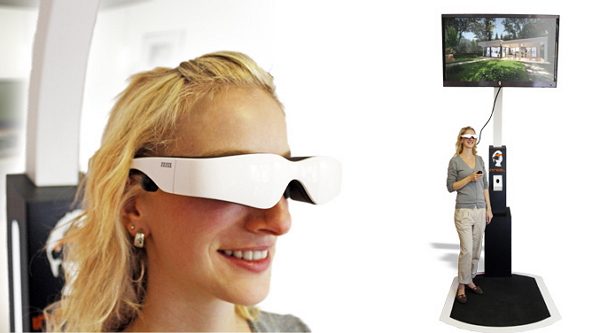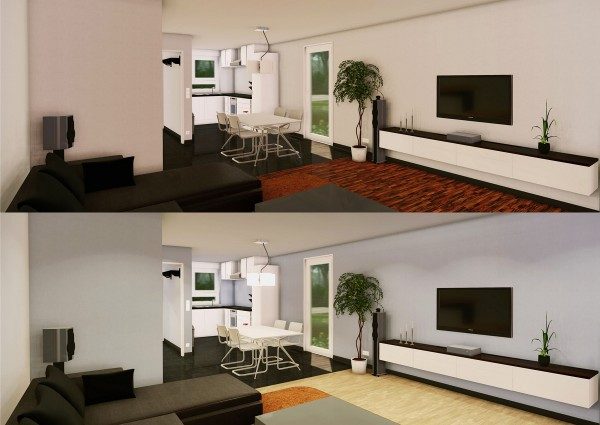

Here’s the promo video for Inreal’s VR terminal:
Inreal has licensed CryEngine 3 from Crytek, the same game engine that powers the graphical blockbuster Crysis 2 (2011) and the upcoming Crysis 3 (2013). CryEngine 3 is used to import CAD designs from 3DS Max or Maya into a real-time rendering environment where the scenario can be tweaked on the fly to see how the building would look in various conditions such as: different times of day, lights on and off, and different decor. This tweaking is done through a companion web-app that is controlled by a presenter from a smartphone, tablet, or other device. Inreal works with clients to build the environment that the client wants within CryEngine 3 to allow this simulation to happen.


The user puts on the Cinemizer from Carl Zeiss and, thanks to Inreal’s headtracker which connects to the HMD, the user can look around freely to feel as though the user is standing in the building itself. Included is also a handheld controller allowing the user to walk around the building. Above the terminal is a large monitor to allow a crowd to see what the user is seeing.
You might remember that we saw the Inreal Terminal at Carl Zeiss’ CeBit booth back in March:
Head Tracker
Inreal has developed the head tracker (called HT-1) that Carl Zeiss will be offering with the Cinemizer HMD. This is a 3DOF tracker which attaches to the side of the Cinemizer. Roll, pitch, and yaw is tracked thanks to an accelerometer, gyroscope, and magnetometer. Inreal is launching an SDK that will allow developers to interface with the data from the headtracker. There is also a simple mouse-emulation mode for easy compatibility with existing applications.
According to Carl Zeiss, the headtracker will priced at less than €100 ($125) and sold as an optional accesory for the Cinemizer. The launch date for the headtracker is expected between October and November.
I spoke with Michael Beyhs, Inreal’s CTO and co-founder, who told me that the first version of the headtracker would be made exclusively for the Cinemizer. However, the company is working on other headtracking hardware and intends to sell it directly to consumers.
Inreal’s Future
The VR locomotion space is going to heat up very soon if the Oculus Rift takes off in the game world so this is a good place for Inreal to focus their attention. Replacing the controller with a much more intuitive means of movement will enhance immersion greatly. Thus far there isn’t a reasonably priced or sized consumer solution for VR locomotion. Maybe Inreal will be the ones to change that.


